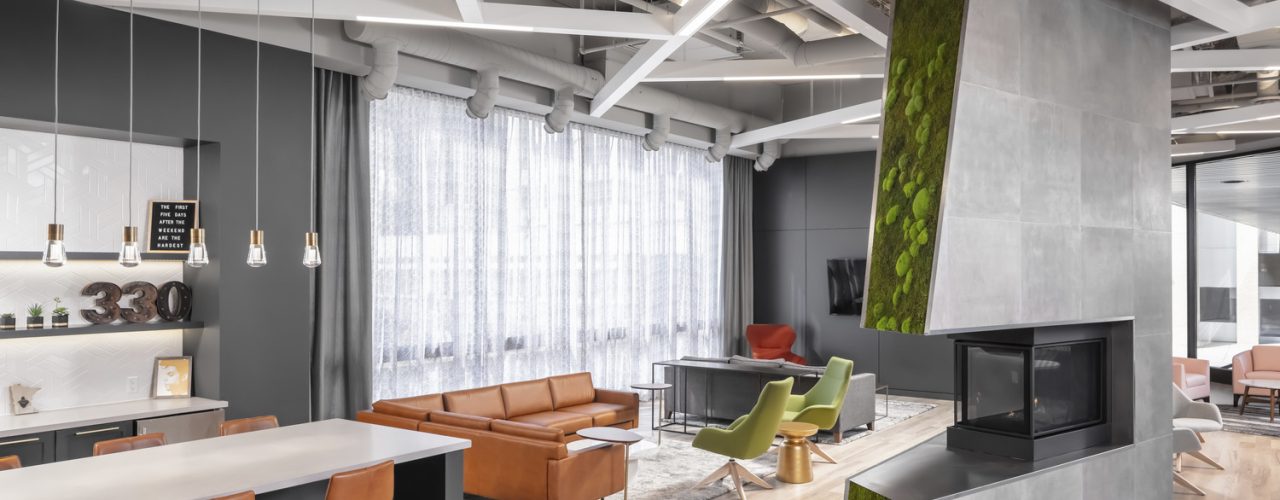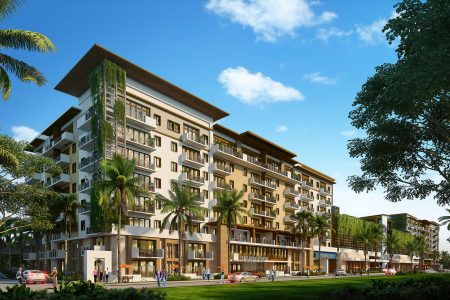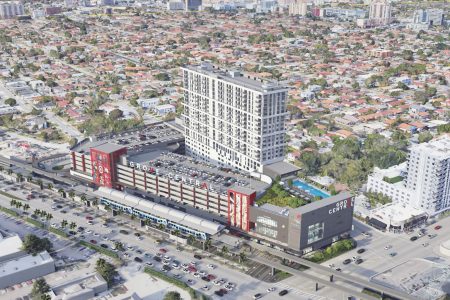Multi-Family Design Trends: The Post-COVID Amenities Race

The pandemic accelerated some multi-family design trends and stopped others in their tracks. Senior Project Interior Designer Haley Stofferahn NCIDQ, LEED GA explains.
We’ve all seen the headlines: the housing market is on fire. Prices are up. Supply is down. And mortgage rates are climbing. The housing shortage is nothing new, but the pandemic exacerbated the issue. The conventional wisdom holds that urban-dwellers with enough resources swiftly moved out of cities and made a beeline for single-family homes in the suburbs or the countryside starting in March 2020. But what about multi-family residential? Is it really as doomed as the hive-mind would lead us to believe?
Let me answer that with a resounding, “No.” Multi-family residential remains strong in most major urban areas. Rents rose by double digits in 25 of the top markets according to leading economists. The fact lingers, though, that the events of 2020 continue to change how we live and work. In order to stay ahead of consumer wants, needs and trends, the Multi-Family Residential sector has to adapt. Fast.
The Live-Work Connection
Interestingly, we are seeing a lot of parallels between apartment and condo trends and workplace trends. While offices are reconfiguring to add more residential-like amenities and lure workers back with creature comforts, apartments are being designed and redesigned to accommodate an increase in permanent remote work. As designers, we’re working with developers to do this in a few significant ways.
Accommodating how one or two residents can work in a dwelling seamlessly is at the forefront of unit design. Unit layouts are becoming more flexible with details and fixtures that allow tenants to convert bonus rooms into an office, a den or a fitness area. We’re also seeing more built-in workstations within units. Outside individual apartments, what once would have been a disused business center is being replaced with comfortable, connected co-working space.
And, as always, location is critical. As people stay closer to home, proximity to restaurants, and shopping make or break the quality of apartment living.
Designing Healthier Residences
Space design is becoming a major driver in the quest for physical and mental health. COVID pushed this movement forward, of course, but it has been in the making for years. The WELL Building standards, for example, are moving beyond commercial office buildings. They are now running pilot programs for other built environments, including multi-family residential. It’s only a matter of time before these standards become, well, standard in all residential buildings.
These guidelines cover everything from indoor air quality and safer materials to daylighting and access to healthy food and exercise. It’s a holistic way of looking at residential that also encourages healthy behaviors through design. To be honest, statistics are hard to come by since it’s still an emerging field. But we do see more of our clients addressing wellness by design, from market rate buildings to luxury developments to senior living and co-ops. As people of all ages become more and more aware of how the built environment can help them reach their health goals, it only makes sense that they would turn their focus to where they spend most of their waking hours, demanding a healthier home environment.
Technology Rules
In a survey conducted by BISNOW, technology was the #1 asked-for amenity in residential buildings. That refers to built-in, high-speed, secure internet with extra bandwidth for streaming, gaming and the vast increase in Zoom calls. But it also means touch-less entries, touch-less elevators, and HVAC systems with ionization to improve air quality and decrease viruses. These can all be tied to an in-unit Nest thermostat for ultimate customization. The goal is to get the resident from the entry of the building to the interior of their unit with as few touchpoints as possible.
The Internet of Things and sensors are less common amenities at the moment, but we see this concept growing more popular growing in the future. These innovations can have any number of applications, from reducing energy and water consumption to helping residents feel more secure in a senior living development.
Changing Spaces
New ideas of flexibility go beyond individual units; they extend to communal areas as well. Package rooms are becoming notably larger in line with the increase in online ordering and grocery delivery accelerated by the pandemic. In one of our projects, a new senior co-op concept, the food delivery package room is a space directly off the vestibule so delivery drivers don’t have to go into the main building at all, cutting down on shared air and keeping everyone safer. We see this as a design trend that will continue to grow.
A few years ago, a large club room with the obligatory billiards table was standard in most apartment buildings. Now we’re seeing those large spaces divided into smaller, more intimate social spaces that support COVID protocols. Again, flexibility is the idea—these smaller rooms can be merged together to make larger spaces as needed. Imagine a 12-person dinner party in one room next to an outdoor patio gathering for 8, which can open up or close off from one another with a large foldable door and you’ll have the picture.
Social Animals
Americans love their pets and renters are no exception. More than half of U.S. households own at least one dog and more than a third have at least one cat. Pet ownership has increased per capita by 20% since the late 1980s, so it’s no wonder that tenants are increasing the demand for pet-friendly amenities.
A decade ago or more, apartment-dwellers would meet their friends and neighbors in a coffee shop or the laundromat. But as in-unit amenities have increased, the dog run has become the new social hub for people and canines. Over the last couple of years, we have seen an uptick in dog-friendly areas, but now we’re seeing a rooftop patio or hangout space next to it, encouraging human and animal social connections.
Moving Forward
The pandemic has fundamentally changed how people interact with the world. Many of the issues and trends it accelerated are here to stay. Now more than ever flexibility, a focus on health, and using technology to support new priorities will help multifamily developers and landlords attract and retain renters.




